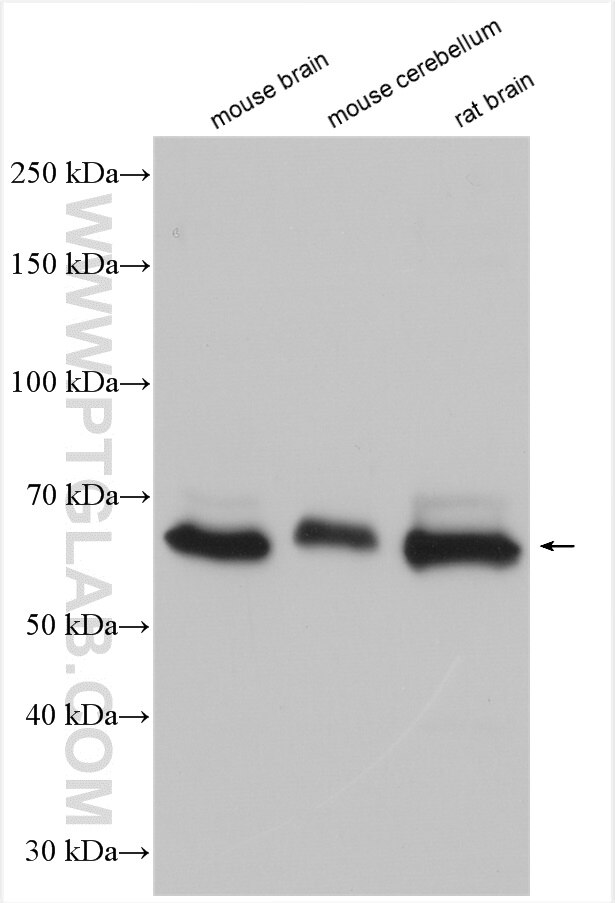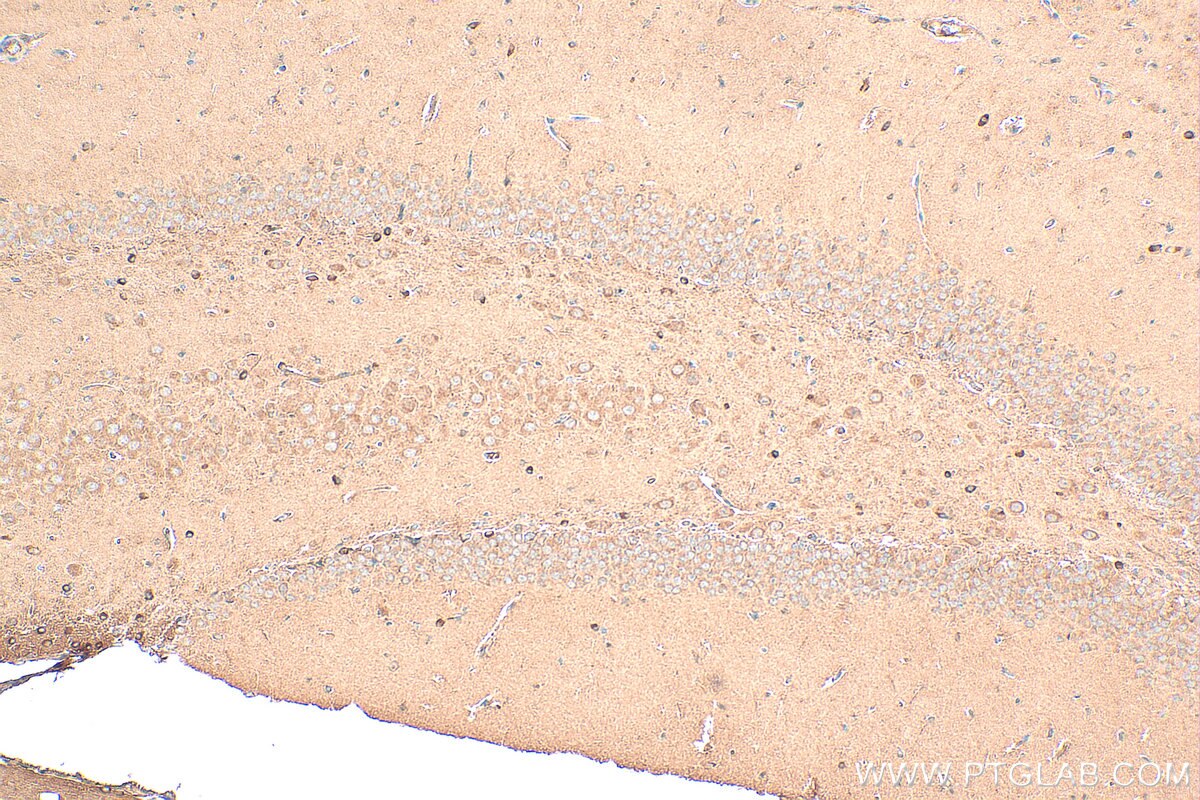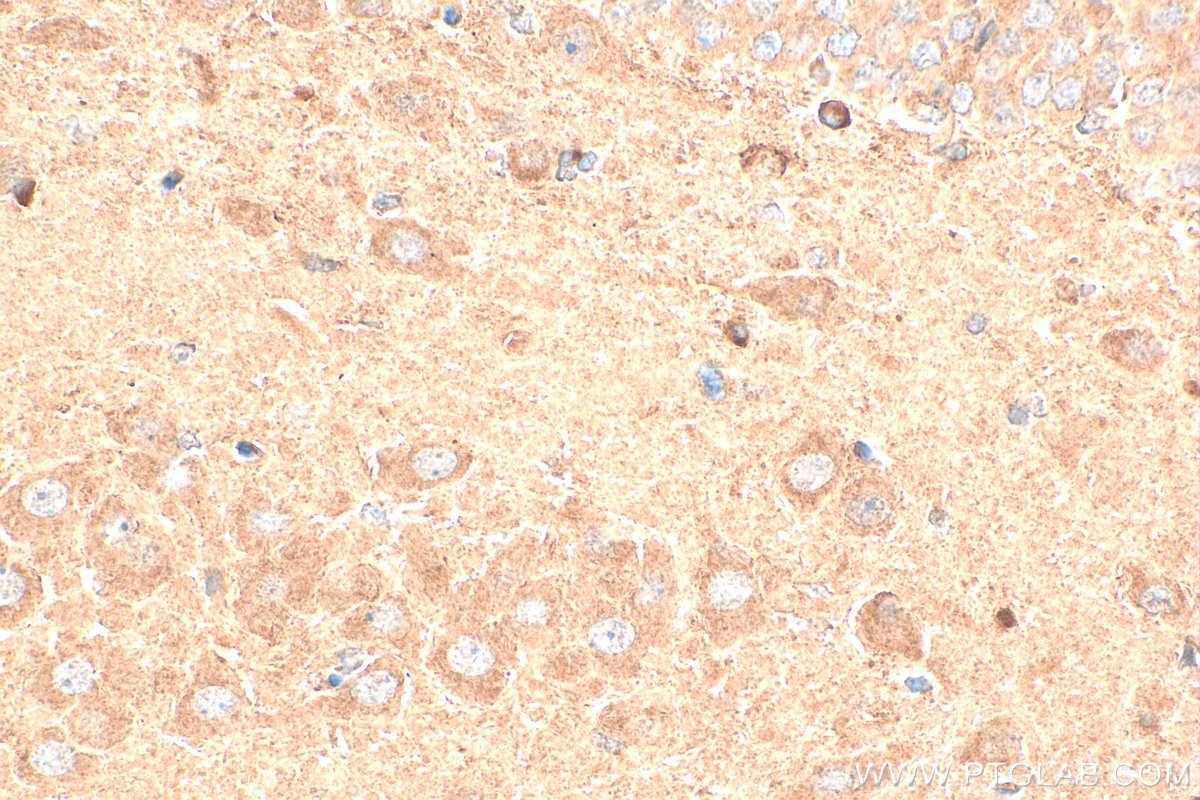- Featured Product
- KD/KO Validated
GPR37/Pael-R Polyklonaler Antikörper
GPR37/Pael-R Polyklonal Antikörper für WB, IHC, ELISA
Wirt / Isotyp
Kaninchen / IgG
Getestete Reaktivität
human, Maus, Ratte
Anwendung
WB, IHC, ELISA
Konjugation
Unkonjugiert
Kat-Nr. : 29989-1-AP
Synonyme
Geprüfte Anwendungen
| Erfolgreiche Detektion in WB | Maushirngewebe, Maus-Cerebellum-Gewebe, Rattenhirngewebe |
| Erfolgreiche Detektion in IHC | Rattenhirngewebe Hinweis: Antigendemaskierung mit TE-Puffer pH 9,0 empfohlen. (*) Wahlweise kann die Antigendemaskierung auch mit Citratpuffer pH 6,0 erfolgen. |
Empfohlene Verdünnung
| Anwendung | Verdünnung |
|---|---|
| Western Blot (WB) | WB : 1:1000-1:8000 |
| Immunhistochemie (IHC) | IHC : 1:50-1:500 |
| It is recommended that this reagent should be titrated in each testing system to obtain optimal results. | |
| Sample-dependent, check data in validation data gallery | |
Veröffentlichte Anwendungen
| KD/KO | See 1 publications below |
| WB | See 1 publications below |
Produktinformation
29989-1-AP bindet in WB, IHC, ELISA GPR37/Pael-R und zeigt Reaktivität mit human, Maus, Ratten
| Getestete Reaktivität | human, Maus, Ratte |
| In Publikationen genannte Reaktivität | Maus |
| Wirt / Isotyp | Kaninchen / IgG |
| Klonalität | Polyklonal |
| Typ | Antikörper |
| Immunogen | GPR37/Pael-R fusion protein Ag32431 |
| Vollständiger Name | G protein-coupled receptor 37 (endothelin receptor type B-like) |
| Berechnetes Molekulargewicht | 67 kDa |
| Beobachtetes Molekulargewicht | 67 kDa |
| GenBank-Zugangsnummer | BC040007 |
| Gene symbol | GPR37 |
| Gene ID (NCBI) | 2861 |
| Konjugation | Unkonjugiert |
| Form | Liquid |
| Reinigungsmethode | Antigen-Affinitätsreinigung |
| Lagerungspuffer | PBS with 0.02% sodium azide and 50% glycerol |
| Lagerungsbedingungen | Bei -20°C lagern. Nach dem Versand ein Jahr lang stabil Aliquotieren ist bei -20oC Lagerung nicht notwendig. 20ul Größen enthalten 0,1% BSA. |
Hintergrundinformationen
The orphan G protein-coupled receptor GPR37, also known as PAELR (parkin-associated endothelin receptor-like receptor) or ETBR-LP-1 (endothelin B receptor-like protein 1), is a 613 aa, multi-pass membrane protein predominantly expressed in the brain. It is a substrate of parkin (PARK2). When overexpressed in cells, GPR37 tends to become insoluble, unfolded, and ubiquitinated in vivo. Accumulation of the unfolded protein may lead to dopaminergic neuronal death in juvenile Parkinson disease (JPD).
Protokolle
| PRODUKTSPEZIFISCHE PROTOKOLLE | |
|---|---|
| WB protocol for GPR37/Pael-R antibody 29989-1-AP | Protokoll herunterladen |
| IHC protocol for GPR37/Pael-R antibody 29989-1-AP | Protokoll herunterladenl |
| STANDARD-PROTOKOLLE | |
|---|---|
| Klicken Sie hier, um unsere Standardprotokolle anzuzeigen |




